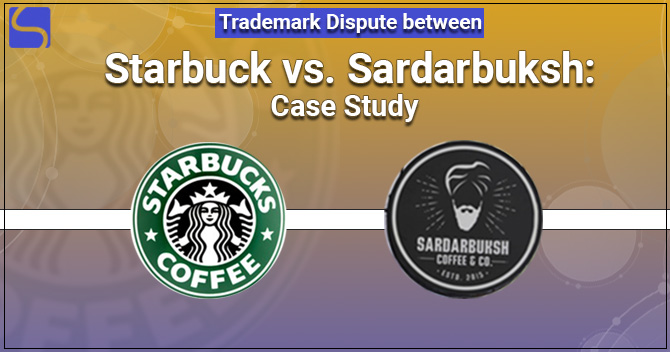A Complete Guide on Trademark Transfer Process in India

Karan Singh | Updated: May 08, 2021 | Category: Trademark
Trademark gives an exclusive right to the Trademark owner to use the mark. It consults many rights to the Trademark owner, which also consist of the right to transfer the Trademark. Transfer if Trademark refers to the right to transfer trademark title from the actual owner to the assignee. An assignee is an individual who receives such rights. Scroll down to check more information regarding the Trademark transfer process in India.
Table of Contents
What is a Trademark Assignment?
Trademark Assignment occurs when the ownership of a registered Trademark is transferred from the actual owner to another, whether along with goodwill or without the goodwill of the business. In the case of a registered Trademark, such Trademark Assignment is needed to be recorded in the Trademark Register.
Different Types of Trademark Assignment
There are four different ways of transferring your Trademark after getting Trademark Registration:
- Complete Assignment: It means transferring of all ownership rights such as the right to sell, earn royalties, etc.;
- Partial Assignment: Transferring of Trademarks concerning only to specific products and services is known as Partial Assignment;
- Assignment with Goodwill: It means the business brand value. When the Trademark is assigned with goodwill, the owner gets to use the brand value of the Trademark;
- Assignment without Goodwill: It means when the Trademark Assignment is implemented only for the Trademark and not for the connected brand value.
Advantages of Trademark Transfer Process
Following are some significant benefits of the Trademark transfer process in India:
- Pre-established Brand: If you have got the right on the well known established brand through the Trademark Assignment, you don’t have to invest your money & time in creating and promoting your brand. Assignee does not have to create a new brand and get it registered.
- Business Expansion: It aids in the business expansion as the assignee and assignor get the exclusive right to work together with the brand.
- Protection for Assignee and Assignor: For a proper Trademark Assignment, an assignment agreement has to be implemented between the parties that consist of both the assignee and the assignor. Such a lawful agreement acts to be relevant evidence and is allowable as proof in the court if any dispute happens among parties. Hence, it protects the rights of both the assignee & assignor.
What are the Vital Requirements of the Trademark Transfer Process in India?
- According to the Trade Marks Act[1], the assignment of a Trademark can be done only by an assignment agreement in writing between the concerned parties. Hence, the assignor and the assignee must execute legal documents for assigning the Trademark.
- The functioning part of the agreement must describe that the individual Trademark transferring is the actual owner. The assignor must have all the rights, interests, and titles in the Trademark. It must also create that the assignor has the rights and legal authority to transfer the Trademark ownership.
- It is the lawful title that is required to be transferred in Trademark. Hence the information related to the Trademark, such as class number, brand name, application number, etc., must be précised in the agreement.
- This agreement part shall declare the assignee’s amount to the assignor in exchange for the Trademark Assignment. It set up that the rights, interest, and title in the Trademark has an allowance. You can also state if the transfer of the Trademark process also consists of the transfer of goodwill.
What is the Trademark Transfer Process?
Every Trademark which was already registered is transmissible and assignable. It can take the following forms:
- The Trademark Assignment may be done for some or all of the products or services for which the Trademark has been assigned;
- The assignment/transmission of the Trademark may be done with goodwill or without the goodwill of the business.
Following are the steps to transfer the Trademark:

Step 1: Trademark Assignment Application: The Trademark Assignment can be made by the Assignee or by the Assignor or by both, and both the assignor and assignee can make the requests mutually.
Step 2: Filing Form TM-P: After the above step, then filing Form TM-P by providing all the essential details of the transfer.
Step 3: Submission of Documents: Once you file the Form TM-P, you are needed to submit all the vital documents for Trademark Assignment to the Registrar of Trademark within six months from the date of acquisition of ownership.
Step 4: Application Processing: Once the duly filled application and all the vital documents are successfully submitted, then the application shall be processed for further process.
Step 5: Advertisement of Assignment: When your assignment application is specified, the applicant is required to make an assignment advertisement in such a way as fixed by the Trademark Registrar. Submit the copy of the Registrar’s direction and assignment advertisement in the Office of Registrar.
Step 6: Approval: The Trademark Registrar will examine the assignment application on receiving the application for the Trademark transfer process along with the vital documents. Once the examination is done and if the Trademark Registrar is fulfilled, they will approve the assignment application. But, the Trademark Registrar will register the assignee as the Trademark owner. The Trademark Registrar shall enter the Trademark Assignment details in the register.
Limitations of Trademark Transfer Process
As you know that the Trademark transfer process is procedural; hence, the Trademark Registrar may reject a Trademark Assignment in some instances. In the case of registered marks, the Trademarks Act, 1999 puts definite limitations. It is on the registered Trademark Assignment where there exist possibilities of generating interfering with another mark.
The limitations on the assignment cause the formation of the right in more than one individual for the same products or services. Hence, the Trademark Registrar might not permit an assignment that can deliver rights over a Trademark. This is for numerous parties for a similar description of products or services or those that are linked with each other.
Conclusion
The Trademark transfer process can be commenced for spreading your business, but you should also implement an agreement for such a Trademark transfer. Not have such an agreement can have severe effects. Hence, it is advised to get the deal ready. You may take some expert help while dealing with Trademark Registration, transfer, etc.














